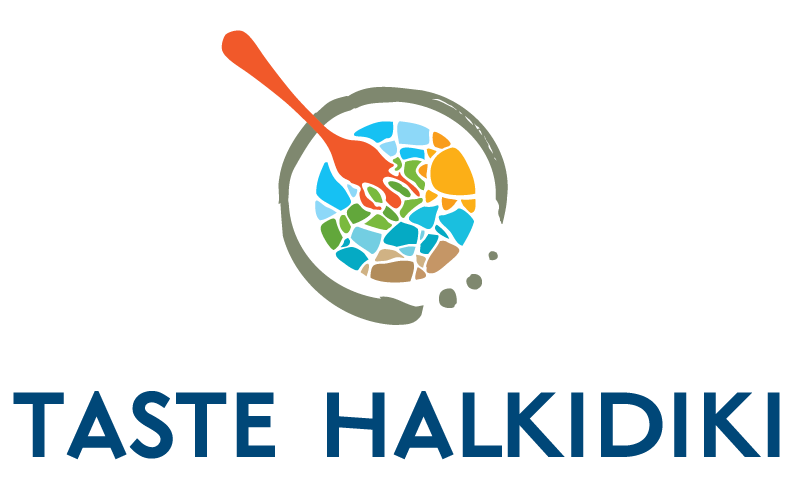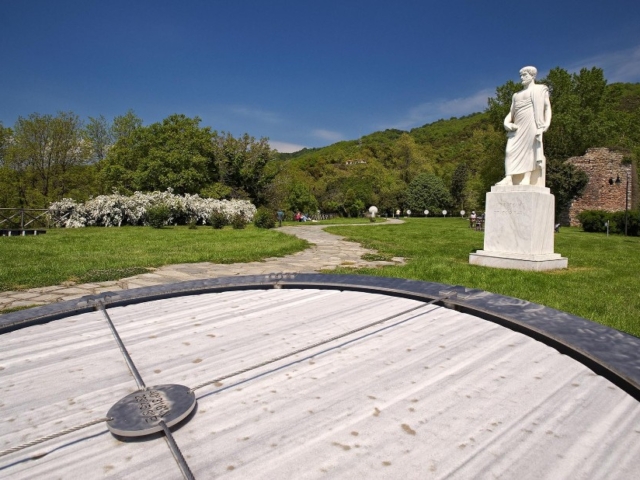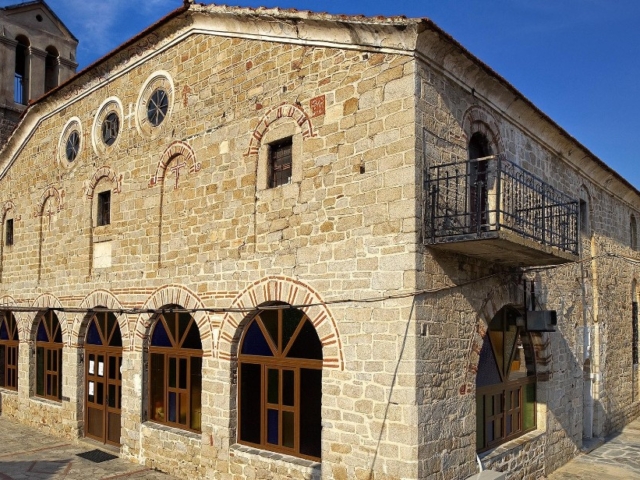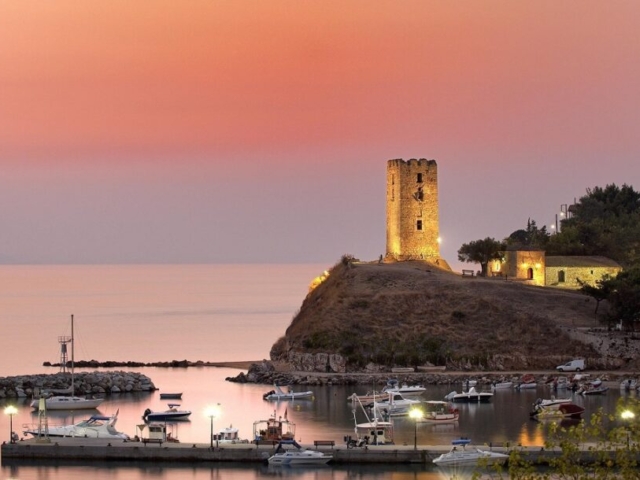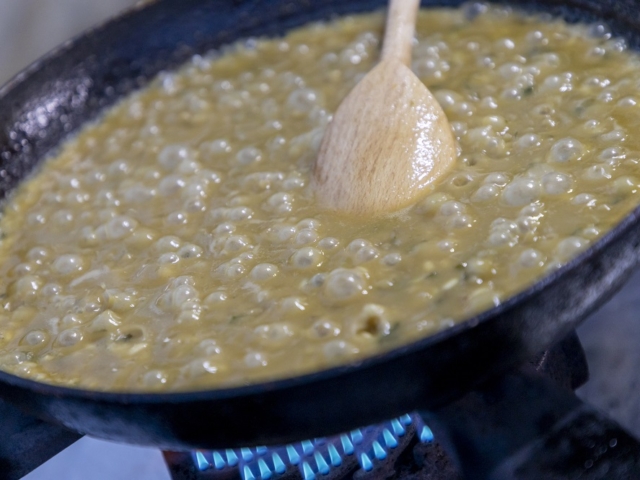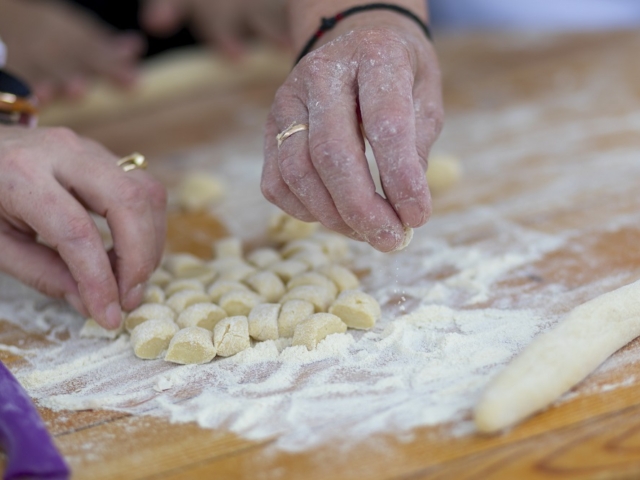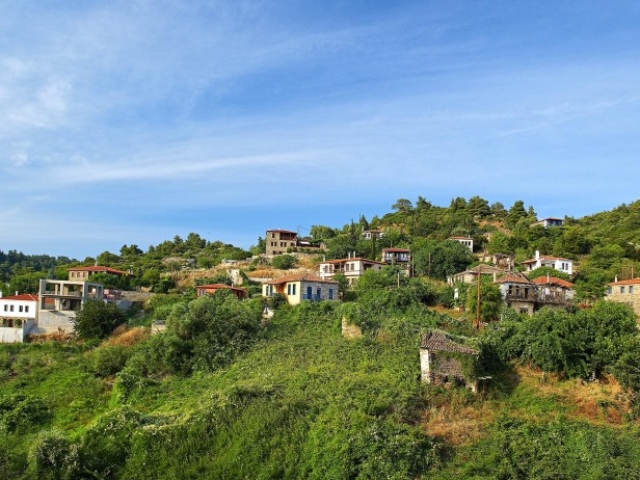History of Halkidiki
A brief history of Halkidiki
There are references for the existence of populations in the area of Halkidiki at least 200.000 years ago, even 700.000 according to some archaeologists from the findings of the human skeleton in the Cave of Petralona.
Many cities of Halkidiki were prosperous during the classical period, among them, Olynthos, Toroni, Mendi, Potidea, Akanthos establishing Alliances and playing role in the international scene.
As it is confirmed by ancient writers and numismatic findings the Romans tried unsuccessfully to occupy cities in Halkidiki. Though Roman traders settled in Akanthos and established a Roman colony in Kassandra.
Although there are no references for Halkidiki after the period of the Roman Empire decline, there are monuments, a church from the Justinian period, which was discovered in Nikiti, that reveal a sequel of the cultural and economic life despite the wars and the invasions of the time.
Halkidiki was very much influenced by the boom of the monasteries of Agion Oros during the Medieval times, which were later developed with the favor of the Byzantine Emperors, who also conceded a lot of cultivable tracts of land. The rich monasteries attracted pirates, mostly Katalans.
The Turkish occupation which is estimated by the end of the 14th century and was established in 1430 with the fall of Thessaloniki, creates a new situation as the conquerors bring Muslim settlers to Halkidiki from Minor Asia, who settle down in the north-east and north-west areas near Thessaloniki. The taxes imposed by the conquerors, were collected and paid in common, sometimes with the rich local products such as silver. In 1921 Halkidiki rebels with the of southern Greece. The organization and gun superiority of the Ottomans suppresses the rebellion.
In the contemporary times, Halkidiki is not an exception during the first half of the 20th century which was marked by much unrest all over Europe. It was liberated in 1912 after 500 years of occupation, whereas during the exchange of populations in 1922 it received a great number of refugees from Minor Asia, who settle mostly in the of the Muslims who leave.
The following years until the mid 20th century, Halkidiki is in the same situation as the rest of Greece, with a severe economic crisis after the War, the German occupation and the bloody Civil War. Though, the second half of the century is the beginning of a new era, where Halkidiki develops and grows in a place with rich agricultural production but also an attractive destination with significant contribution to the state economy.
History of the Gastronomy in Halkidiki
From the time of Aristotle, the classical times and later on the Byzantine period, during which the locals work and cultivate the tracts of the Monasteries und until the contemporary times, Halkidiki is a blessed place with rich agricultural production, well developed stock-farming, dairy and cheese production, viticulture, apiculture and with a lot of fish and seafood from its’ seas. The variety of ingredients, but also the different civilizations that meet, define the gastronomic identity of Halkidiki, that steadily develops throughout the centuries. The most important influences come from the ancient times, the Mediterranean, the Ottoman occupation, the populations from Minor Asia, but also from the “Athonite State” and the rich monastery gastronomic tradition.
From the ancient times come the vineyards with references for their cultivation already from the 5th century b.C., the olive oil, the fruits which are eaten dried, the greens, the dried fruit, the grains which are turned into bread or are eaten as porridge, honey and herbs. The ancient people are mostly vegetarian and meat is eaten at special occasions mostly after offerings, in contrast to fish which is plenty in their nutrition. Cheese is a basic kind of nutrition and it is used as a condiment to flavor the food. Cooking is mainly based in ingredients and not in complicated techniques. Sweet and sour flavors are mixed in ancient dishes and vinegar as well as juices from unripe fruits such as grapes, pomegranates are used as a sour agent.
The Mediterranean kitchen is not a product of a specific nation or culture like local national kitchens. The Mediterranean is a crosspoint between Europe, Asia and Africa and encourages the exchange of products and the influence between its people.
The rich agricultural production because of the temperate climate, creates the identity of the Mediterranean nutrition, with its main characteristic the olive oil and the use of vegetables which are cooked in different ways around the places.
Meat is moderately used whereas the geographical location near the sea makes fish, rich in protein, a beloved food.
Herbs and spices such as oregano, basil, thyme, rosemary, marjoram, parsley, dill, spearmint, garlic, coriander, fennel, estragon, safran are a necessary addition to every dish.
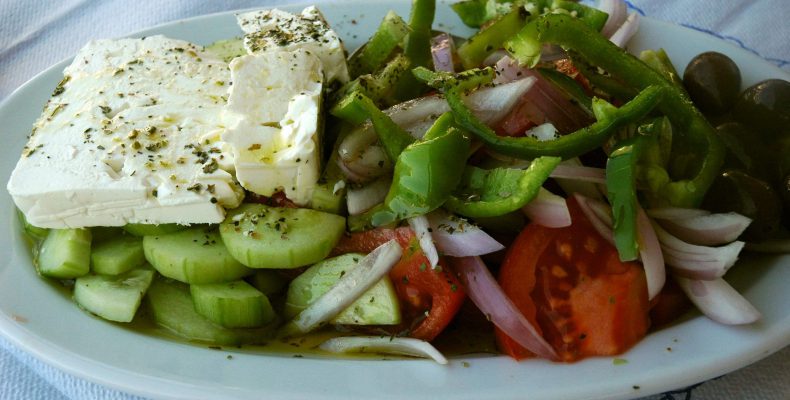
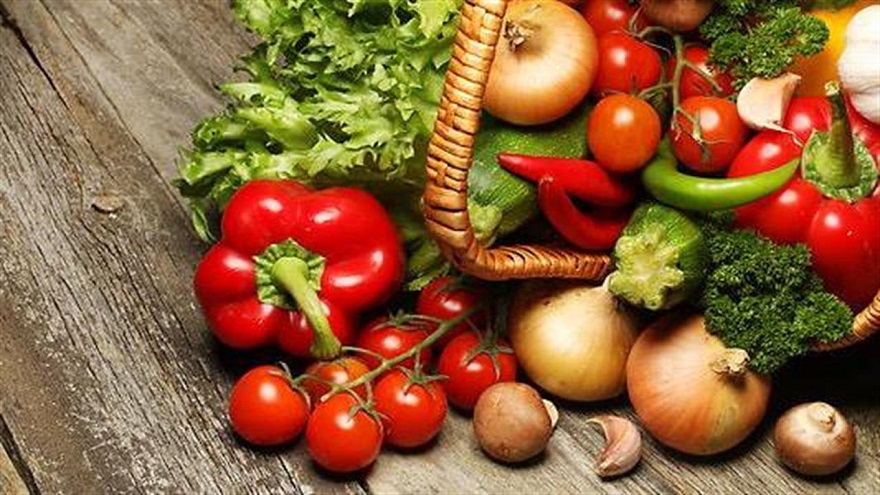
The Ottoman occupation and the influences from Eastern Mediterranean have put in the first line products such as joghurt, mint, parsley, lemon whereas pomegranates and nuts are used in different sauces. Lamb and poultry are part of the eastern nutrition whereas grains are turned into flour and are used for the preparation of bread and pies. Chick-peas whole or grated are a replacement for meat and a source for protein intake. Many Turkish words have prevailed in the Greek kitchen such as yahni, kavourmas, mousakas, yuvetsi, and others. Though the Ottoman gastronomy is considered as the sequel of the Byzantine and the ancient Greek one, whereas influences come apart from the Greeks, from Persians and Arabs according to the most researchers.
The Minor Asian populations later on, in the beginnings of the 20th century bring with them their rich gastronomic tradition which is a mixture of nations and cultures. Though there are variations in their kitchen according to the place they come from. Therefore we can categorize them to those that come from Constantinople, Cappadocia, Pontus and Ionia.
The main characteristic of the kitchen of Constantinople is the fresh and quality ingredients, spiced in balance and cooked in a simple way without complexity. The appetizers from fish, cured fish such as pickled tuna, tsiros, likurinos(local fish), mussels, mackerel, all sorts of stuffed food, vegetables, with vine leaves, with cabbage leaves, the aubergines, cooked meat, seasonal vegetables and egg-lemon sauce, different dishes stuffed with mince, cooked in olive oil vegetables, soups, legumes are the daily nutrition of the people from Constantinople. A special reference must be done to the “treats” , the so called “whites”, such as vanilla but also the special pastries in syrop.
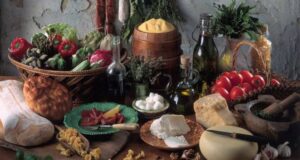
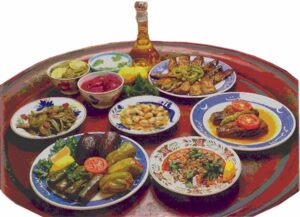
The kitchen of Cappadocia, which was the granary of Minor Asia, is mainly based in grains, bread, bulgur, trahana (local pasta for soup), semolina, hand-made pasta, pies and other legumes. Raw meat was a luxury therefore women used to cure meat for the winter time. “Kavourmas”, sutzuk and pasturma come from Cappadocia and were used in soups or were cooked with legumes. Dairies, butter, joghurt, cheese, ariani existed in loads. Due to the climate conditions drying vegetables in the summer was necessary in order to have them in the winter. In the same way they pickled them and kept them in vinegar and salt. Olive oil did not exist at all in their nutrition as olive trees didn’t grow in the mountainous Cappadocia and cooking was dome with lard, even pastries. There were immense groves in the area and dried fruit was a product that existed in loads, therefore we can find local recipes even with meat.
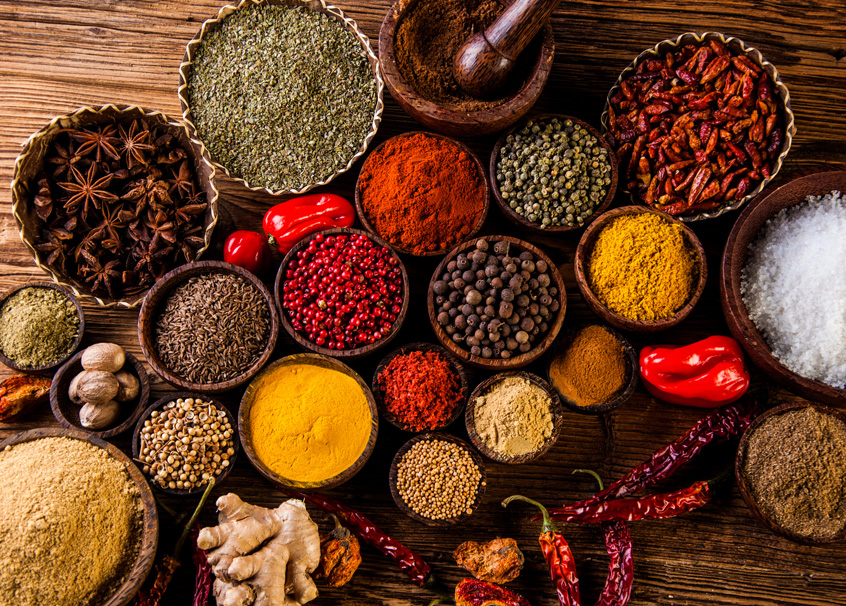
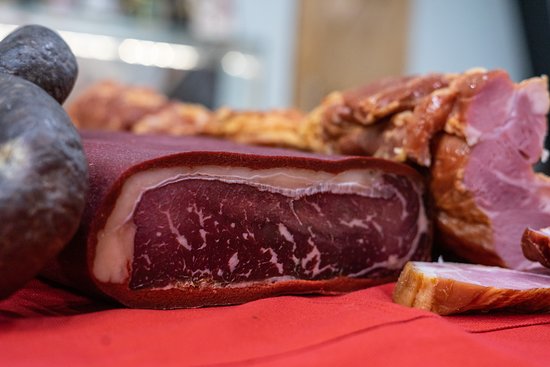
Pontus had a variety of argicultural and farm products but also rich fish products. Fish was the main nutrition for the people from Pontus. In Pontus there were also cultivated and produced large quantities of corn, barley, but also fruits and nuts. The intense trade was the reason for the influences from the Russian kitchen such as the russian salad, borscht, piroshki that were fully incorporated in the Pontian kitchen. Meat and poultry were cooked on Sundays and holidays. Another characteristic of the kitchen of Pontus was the mixture of dairies with grains, barley, bulgur and others.
Finally, the kitchen of Ionia, due to its’ location had many similarities to the kitchen of Constantinople and the islands of the Aegean, as well as influences from the European kitchen through the Levantines , but also the products that arrived there from the West. The rich olives and olive oil production, but also the abundance of fish and mussels from the Aegean, formed the gastronomy of the area. The vegetables and greens were used for the pies and salads, whereas the legumes and meat were a necessary ingredient of the nutrition of the Greeks from Ionia.
An exceptional reference must be done to the secrets of the nutrition of the monks from Agion Oros, such as the only father Epiphanius from Mylopotamos shared with us. The Agioritiki kitchen is simple but plethoric at the same time and is based in all those products that one can find at the Athonic State such as the olive oil, the legumes, the greens, the fish, the sea food and the herbs and spices, all of them main ingredients of the Mediterranean nutrition. It is impressive how rich is the Athonic philoxenia (hospitality) and the balance it keeps between the monastic daily life, the tradition and the gastronomic richness that bring with them the monks from every part of Greece and the world they come from, wherever that is.
Father Epiphanius managed to give a cosmic character to the cooking of Agio Oros maintaining at the same time the mystic character and the self-restraint that dictates the belief and the monastic lifestyle. The Athonic cooking in the way the Father presents it in the valuable cooking book he has left us with the 126 recipes is a sequel of the ancient and Byzantine cooking tradition.

The monks of Agion Oros eat only fish and no meat. The special grouper from Agio Oros with the white sauce from onion juice, with zucchini, green beans, okras, even artichokes, fresh cod or cured, plain or with potatoes and red sauce, rice even with plums but also fried with garlic sauce. Fried fish in the pan, marinated red mullet, scup, tuna, sardines, swordfish, codfish, sea bream, flying fish, stingray even the unappreciated moray become first class dishes for the monks and the visitors, There is a special place for fish soups with vegetables, tomato even egg-lemon sauce but also fish balls.
Legumes is another big category of healthy food and protein source, that have to be strained says the monk and are cooked either with or without olive oil during fasting. Beans soup, giant beans, black beans, lentils, chick-peas, with rice or in the oven but also broad beans, fava and peas are not missing from their nutrition. Creative dishes that come directly from the tradition are cooked from the monks with green beans, artichokes with olive oil or with egg-lemon sauce, peas, potatoes in the over with lemon, aubergines in the pan, greens and zucchini yahni but also moussaka without meat. Leeks, cabbage, spinach, with rice or cooked, fish roe, aubergine spread and soups.
Molluscs and shellfish for fasting with greens, vegetables, on the grill, with orzo or chopped macaroni, with onions (stifado) or fried are always accompanied with a glass of tsipouro (spirit). Snails that the monks select from the mountain or the fields must be fresh and are cooked excellent yahni, with wine sauce, onions, with greens or rice.
The food in the monasteries is cooked on fire with wood when and when they must prepare large quantity of meals for the visitors during holidays they don’t hesitate to put fire in the yards and bring the big boilers out. The food in order to be tasteful needs patience said Father Epiphanius, from the supply of the ingredients, the cutting, the washing, the seasoning to the serving and you must always have in mind those you love if you want to please them.
With the bread, the wine and the delicacies we will share some of the magic of the monks’ cooking art, with the wisdom, the modesty and the thankfulness for the daily offering.
The Gastronomy of Halkidiki today
The references from the past of the gastronomy of Halkidiki are many and various, and carry history, tradition and many cultures. The local kitchen is a mixture of rich ingredients that the land of Halkidiki offers and come either from the mountainous or from the coastal areas. Nowhere else in Greece there is such a variety of products, especially in an era that consumers recognize the quality difference between products and flavors, Halkidiki is a place of an exceptional gastronomic identity and attracts famous chefs and foodies from all over the world.
One of the main characteristics of the kitchen of Halkidiki are the pies. They are filled either with cheeses that are produced in the traditional way or with greens from the mountain. In their sweet versions, they are spread with pure honey, that the countless bees of Halkidiki produce.
The excellent olive oil , the big green Halkidiki olives or the black dried-up, accompany tasteful salads from the vegetables of the area. Meat, game, potatoes from Holomon, mushrooms, chickens stuffed with trahanas, become exceptional dishes in the hands of creative chefs, whereas the mussels from Olympiada make a perfect “meze” for ouzo and tsipouro, Exclusive wine tasting experiences at the multiple wineries of Halkidiki and special pairings with inspired dishes from traditional recipes at local restaurants.
Sweets from fresh seasonal fruits and marmalades and jams from bio fruits and vegetables hand-made at local womens’ Associations, where women transfer traditions from generation to generation. In every corner of Halkidiki there is a gastronomic surprise and a tasteful experience to live!
Fantastic restaurants and fish taverns in every corner of Halkidiki, that respect their clients and the land, create with local products, maintaining the tradition and developing at the same time their creativity, Endless routes in the forests, canals, beaches, traditional villages, visits to olive groves, cheese factories, sweets, pies, vine leaves producers, wineries compose the profile of a rich gastronomic community that offers everything.
The considerable and systematic work from the Region and the Organisation for Tourism from Halkidiki, who recognize the power of gastronomy in the development of the touristic product. Innovative events every year, exploitation of local products, interrelation with other gastronomic communities in Greece and abroad from the successful project KOUZINA, which started in 2011 and has become a top gastronomic event for Eastern Halkidiki. On the same way Sani Gourmet, where visitors have the chance to taste creations from award-winning Greek chefs, new talents but also internationally renowned chefs with Michelin stars in a taste festival that has become tradition since 2008. There are also novel researches worth to mention such as the “Aristotle menu” by the gastronomy Professor George Palisidis, that is based on ingredients, recipes and findings from the times of the great philosopher Aristotle, thousand years ago.
There is one thing for sure. Halkidiki has a rich past but a rich present and future as well! Taste Halkidiki is a route to get to know the plurality of flavors and aromas from the local products, but also the people from the mountains, the meadows and the sea!

The Chamber of Halkidiki has launched a series of events, under the program “Agricultural Development of Greece 2014-2020 CLLD LEADER” in order to promote the gastronomy of Halkidiki.
